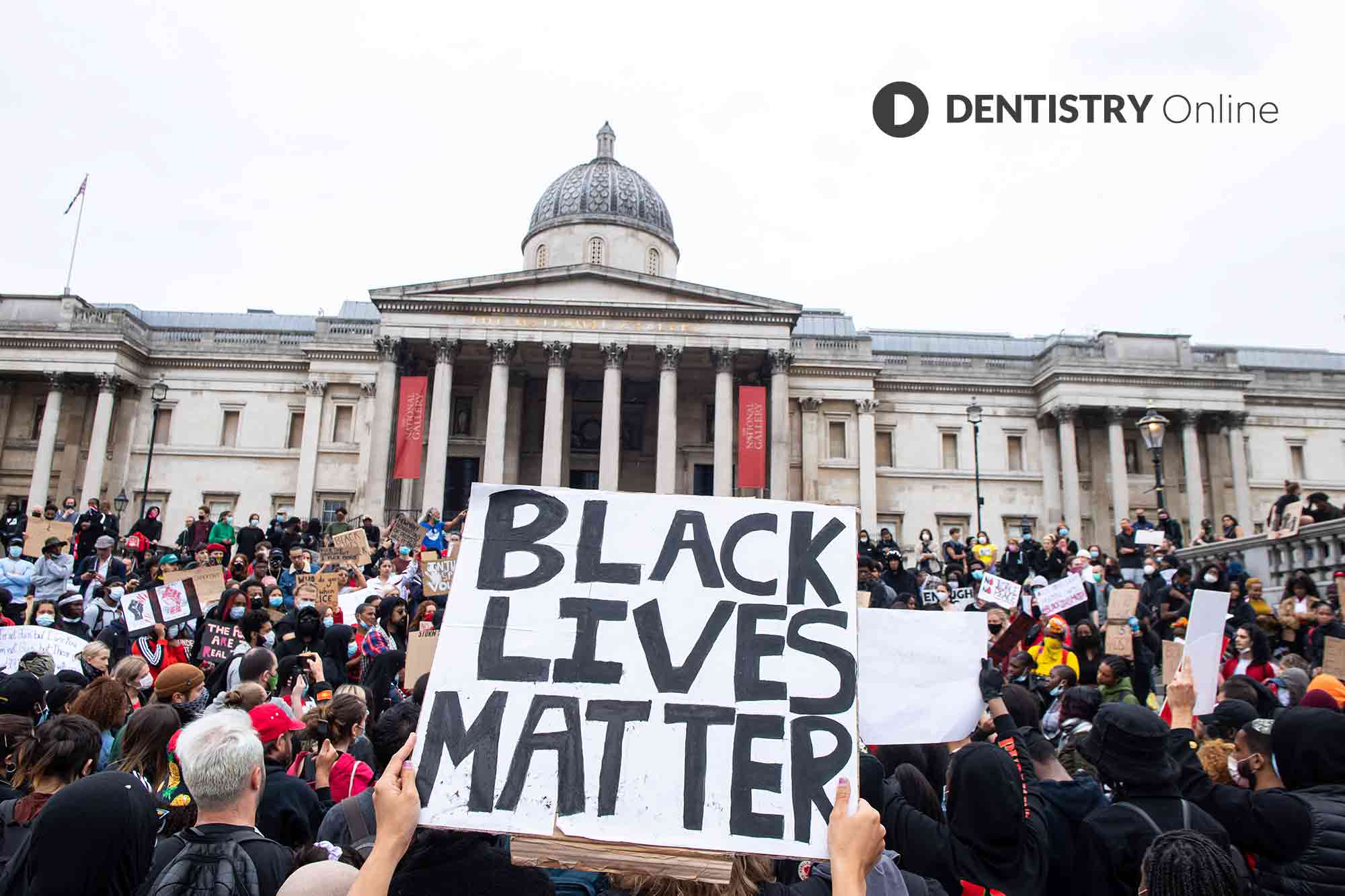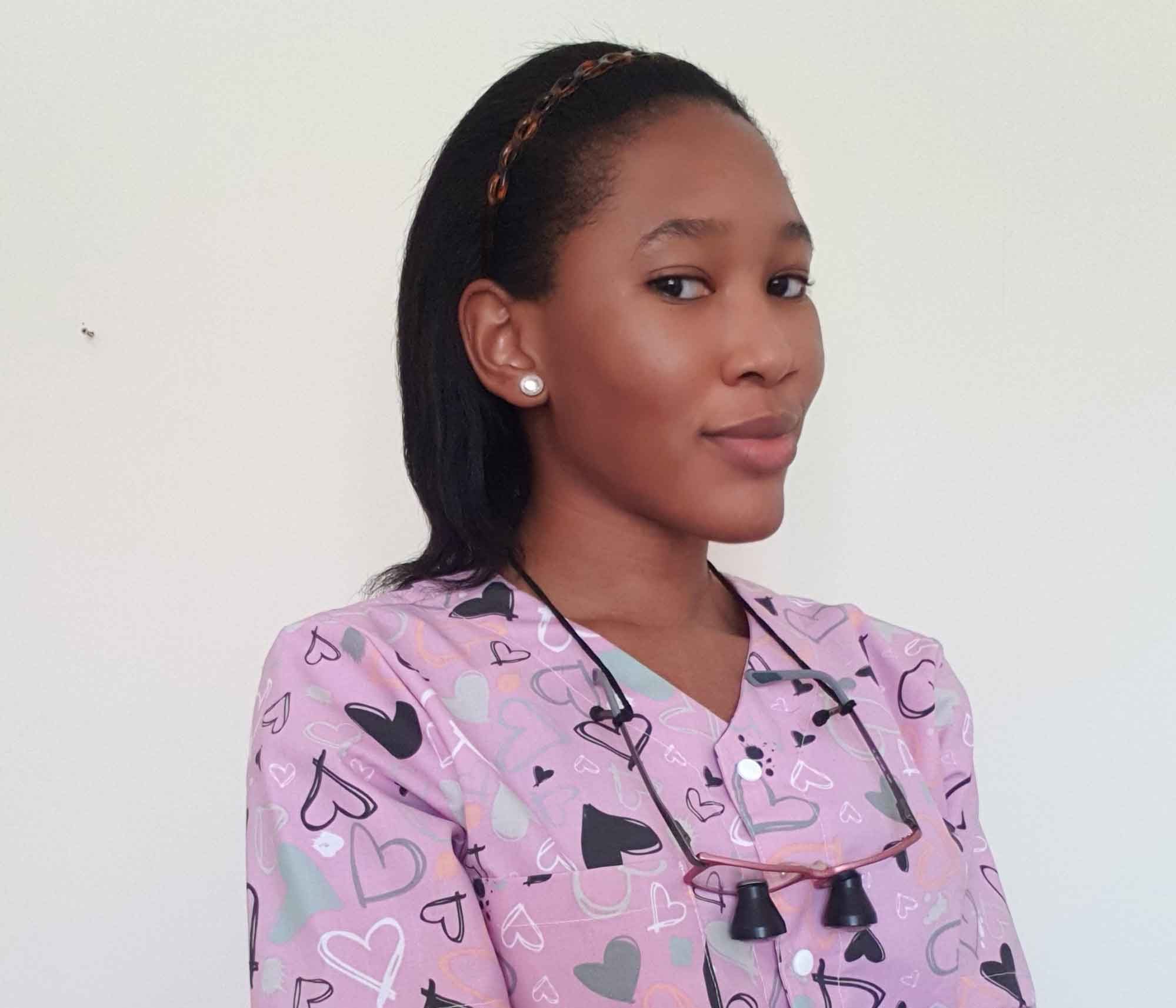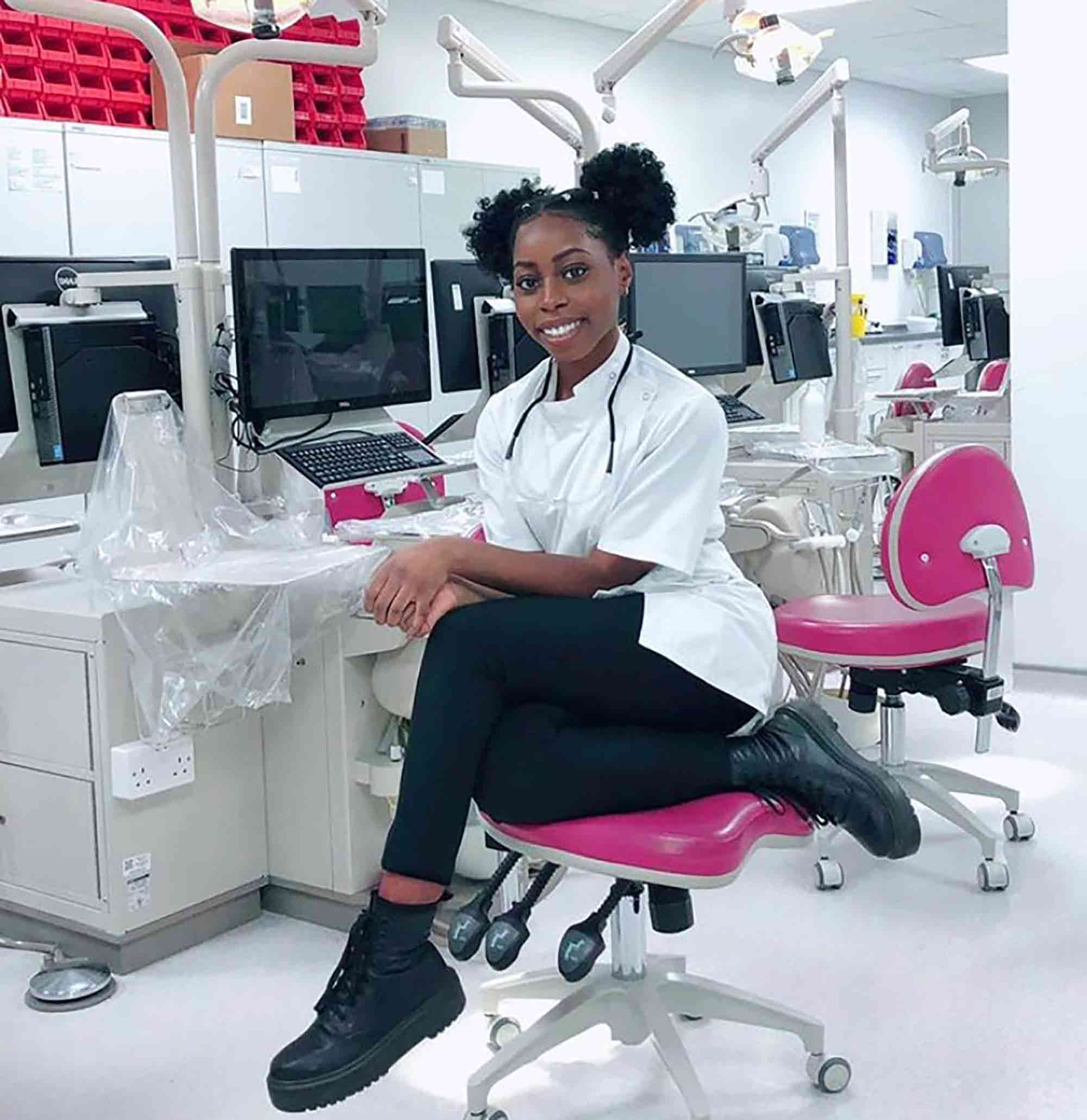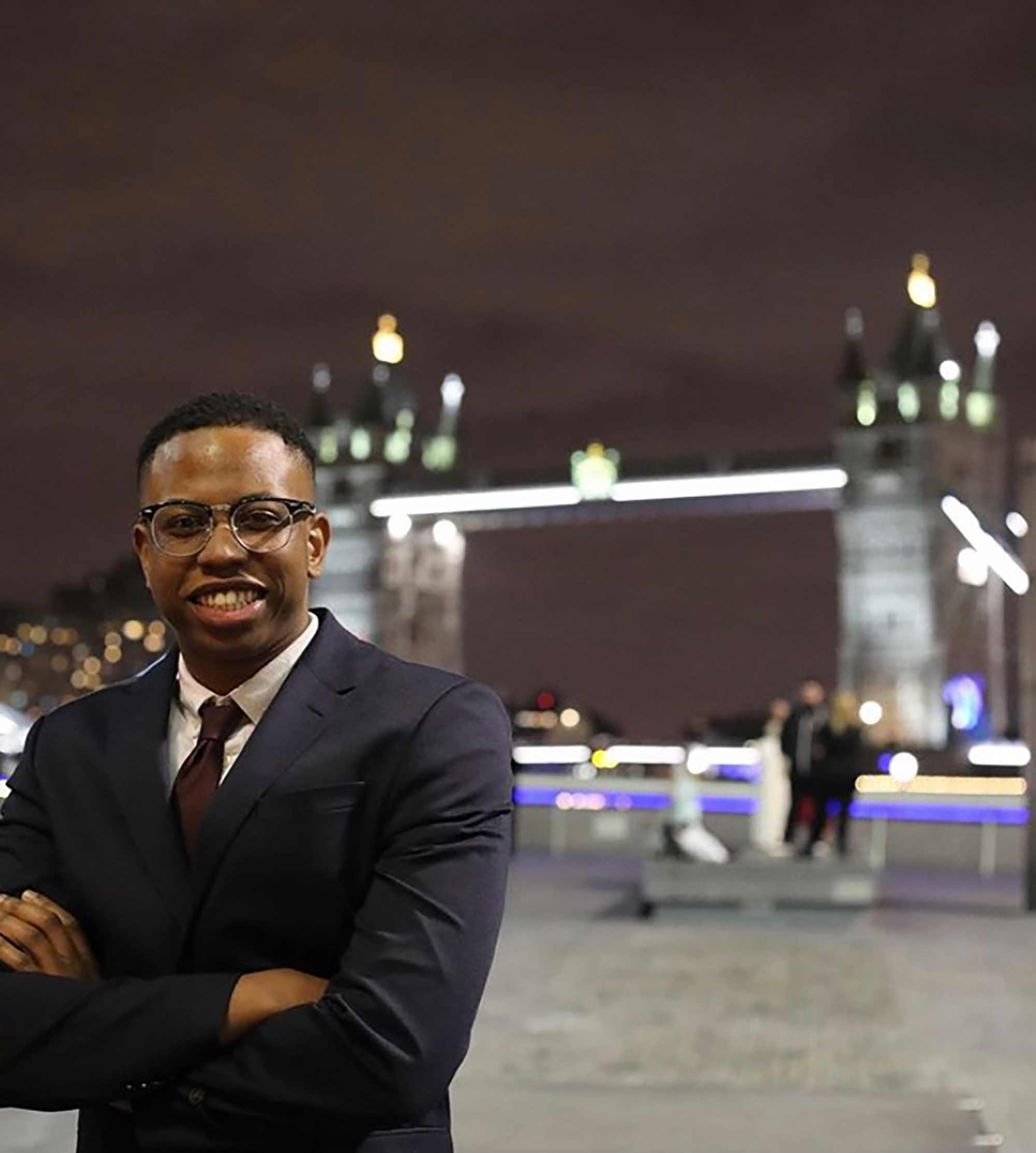 It’s been five months since the murder of George Floyd shook the world and sparked hundreds of global anti-racism protests.
It’s been five months since the murder of George Floyd shook the world and sparked hundreds of global anti-racism protests.
Since then, the Black Lives Matter movement has gathered powerful momentum and forced communities, businesses and governments to question their approach towards fighting discrimination.
The dental profession is no exception. In the weeks following Floyd’s murder, we ran an article where three dental professionals spoke out about their own experiences in dentistry.
But how much progress has been made in dentistry across the UK?
We hear from three dental students about whether they have seen change and what they think needs to happen next.
Chinwe Akuonu
 It’s been five months since the death of George Floyd. I will never forget the impact that event had on me. It inspired my contribution to our first Black Lives Matter article in dentistry.
It’s been five months since the death of George Floyd. I will never forget the impact that event had on me. It inspired my contribution to our first Black Lives Matter article in dentistry.
Now, especially in occasion of the Black History Month, is a perfect time to look back and see what is currently happening in dentistry, or what has been achieved so far.
In terms of establishing equality in dentistry, although these are early times, I can positively confirm that a bit of progress has been achieved. I would like to think that the BLM article was positively received by majority of the dental community. Although a few people were reluctant to admit the presence of discrimination within the profession.
As I mentioned in the previous article, I’m aware that a lot of work will be required. But I consider every positive step of the journey as a win, no matter how small it may be; after all, Rome was not built in a day.
Speak up
In this piece, I would love to highlight some general and personal positive steps that have taken place over the past few months. Some of which have led to important ongoing discussions:
- Jade Kwaku, third-year dental student, from Barts & London, wrote a letter to the GDC. It highlighted the presence of inequalities in dentistry. She is currently liaising with them on how to implement full inclusivity of black minor ethnicities within dentistry
- Dr Owen Iguodala wrote an impressive article on discrimination in dentistry. It was published on the European Dental Student’s Association Magazine. This increased visibility and spread the discussion of ‘equality in dentistry’ internationally
- Students from the University of Cardiff courageously denounced and reported episodes of racism occurring at their university. This ended up in national newspapers
- The FGDP officially released an article endorsing the importance of equality in dentistry. It also organised a webinar to follow up and discuss these issues
- The GDC also acknowledged the issue of inequalities in dentistry and promised to strive to challenge it
- Over the past few months, after the BLM article, I have had young black people, who are considering dentistry as a profession, reach out to me for advice and mentorship. This goes back to a key point on the availability of black role models I mentioned in the previous article. In addition to that, a couple of associations have contacted me to share my story. For example, the BSDHT and Oral-B UK. I think this is a very good starting point on enhancing and increasing the visibility of black dental professionals. This has been ignored for many years now.
Keep moving forward
Currently, discussions are also happening within the internal structures of dental universities. They are looking to create more diverse and inclusive environments. They are also inviting various black dental professionals to actively participate and share their thoughts and ideas.
For example, at my university, King’s College London, the BLM article was published in the monthly newsletter. Everyone was encouraged to read it. After this, two new initiatives were launched to highlight KCL’s commitment to creating an inclusive environment where all individuals are valued.
- The first was a space to post thoughts, reflections or feelings in relation to the Black Lives Matter movement and racism more widely. It is also to share resources or support. This included readings, links or resources that have been particularly helpful in thinking about the impact of racism
- The second was an anonymous form to allow comments and suggestions about other actions that can be taken to combat racism. The suggestions made on the form feed into the faculty strategy. They ensure that everyone has the opportunity to have their say about how racism, and other forms of discrimination, should be tackled.
I think that all these steps and discussions are useful and must continue happening in order to fight discrimination in dentistry. We must always speak up against inequalities and I would also suggest that topic such as ‘equality, diversity and discrimination’ also be an integrative part of the dental curricula taught to dental students.
So far, I am glad that the situation has not been ignored or swept under the carpet. And that the issue is at least being openly acknowledged and recognised by dental organisations and universities. I really hope that we keep moving forward from here, and that things change for the better.
Jade Kwaku
 The social media activism surrounding the BLM movement triggered a racial awakening in many. Liberated from the fear of speaking up about racism, long overdue conversations were had and the dental community quickly sprung into action.
The social media activism surrounding the BLM movement triggered a racial awakening in many. Liberated from the fear of speaking up about racism, long overdue conversations were had and the dental community quickly sprung into action.
Thankfully, organisations have been using their platforms to raise awareness to and publicly highlight the issues of racism and inequality in dentistry on the black community. There was a compelling and perceptive guest article written by vice dean Onkar Dhanoya of the FGDP. As a result, many of us also tuned into the ‘Why Colour is the Elephant in the Room?’ webinar hosted by dean Ian Mills.
A diverse panel of dental professionals shared candid testimonials and perspectives of the impact of prejudice to their professional careers. These included Dr Martin Wanendeya and Dr Timi Adesanya, African-Carribbean Dental Association (ACDA) chair, to name a few.
That Dental Podcast: Off the Cusp invited both Dr Mide Ojo and newly-qualified Dr Yewande Oduwole to discuss their experiences and reflections on the BLM movement, the latter of the two perhaps inspiring the younger generation of dental professionals to follow suit.
Encouraged by willingness
Publications such as the European Dental Student Association Magazine (ESDA) allowed the poignant yet enlightening piece by Dr Owens Iguodala. And the beautifully, thought-provoking: ‘How do we fight racism?’ BDJ article of BDS4 student, Saiesha Anandabaskaran.
After writing an extensive open letter to the GDC, I was invited alongside a group of black dental students to voice our concerns and stimulate discussions into possible research opportunities. This took place with the head of education, head of research and policy and the head of policy and research programme.
Finally, with the FGDP, BDA and GDC releasing their respective statements regarding racism and discrimination in dentistry and pledging their support and resources to redress any inequalities, I think it’s suffice to say we are working to ameliorate the standards of our dental community – both publicly and privately.
Systemic and interpersonal racism disproportionately affects the black community in dentistry. But it is both heart warming and encouraging to see the willingness and devotion of our non-black counterparts in fighting for diversity, equality and inclusivity. We’re united.
Diversity a fact, inclusivity the act
Aside from continuing the fantastic work currently being done, education institutes need to establish committees/project groups that are orientated around the sole purpose of supporting students and addressing their concerns.
For instance, my dental school has created an Anti-Racism Steering Committee (ARSC). This serves as an open and honest forum to highlight flaws in our curriculum. For example, lack of clinical manifestations of diseases in all skin colours.
In tandem with senior faculty members, students are able to devise effective complaints procedures to empower students to speak up amidst adversity.
Larger organisations could regularly provide more CPD webinars. They could continue educating dental professionals with clinical teachings on diseases affecting different demographics. For example, pigmented fungiform papillae but also socially to include topics such as the ‘unconscious bias’, ‘racialisation’ and ‘microaggression’.
They need to support organisations such as the buddingblackdentists that work to improve representation and visibility of black dental professionals as role models. This helps to normalise diversity and inspire a wealth of young black children to pursue dentistry as a career.
Finally, the promotion of mentoring schemes ie Mentors4Dentists to widen participation and provide access to the dental industry. Diversity is a fact; inclusivity is the act.
Finding long-term solutions
The stages have been set by our respective organisations. However we all have our parts to play in purging our profession of the detrimental effects of racism and discrimination.
Racial unconscious bias training is essential (Hall, 2015). Unfortunately, implicit bias scores of medical professionals are similar to those in the general population. However, we have a duty to our patients and colleagues to unlearn these ingrained prejudices in order to withhold a high standard of indiscriminate professionalism.
Many people are unaware of their biases and how they may be affecting their dental decision-making (Patel et al, 2019). Using resources such as implicit bias tests may be of significant help. This was shown in the Channel 4 mini-series: ‘The school that tried to end racism’.
It’s important to remember that discrimination can come from anyone – from our superiors, patients and peers. Whilst this could be unintentional and a result of our unconscious biases, as dental professionals it is our duty to be introspective, reflective and always question ourselves.
Let us be dedicated to checking our biases, understanding the racial inequalities in dentistry and finding long-term resolutions!
References
Patel N, Patel S, Cotti E, Bardini G and Mannocci F (2018) Unconscious Racial Bias May Affect Dentists’ Clinical Decisions on Tooth Restorability: A Randomized Clinical Trial, JDR Clinical & Translational Research, 4(1): 19-28
Hall W.J, Chapman M.V, Lee K.M et al (2015) Implicit Racial/Ethnic Bias Among Health Care Professionals and Its Influence on Health Care Outcomes: A Systematic Review, Am J Public Health, 05(12): 60–76
TJ Kadiyo
 I honestly believe we are on the way to achieving equality in dentistry. More than ever, I feel like there have been actionable steps taken to try to address some of the problems that still exist within the profession.
I honestly believe we are on the way to achieving equality in dentistry. More than ever, I feel like there have been actionable steps taken to try to address some of the problems that still exist within the profession.
From committee roles, focus groups and increased awareness in general, it is clear that the unfortunate death of George Floyd has catalysed conversations that should have really been had a long time ago.
I am personally of the belief that in society, whenever any group is underrepresented, it becomes increasingly difficult to cater and address their needs. With only 1% of registered dentists identifying as being black British (Neville, 2018), one can only begin to imagine how little representation this ethnicity has in creating policies and standards.
Even without any black dental professionals in higher positions, it is still critical to address racial bias. However, it is harder to address these issues directly if you cannot relate to them. From my perspective, in order to capture the specific issues, gather the relevant information, formulate a plan and deliver it effectively, requires representation of the group that is suffering.
There is already evidence of racial bias in the current literature. But some of the studies focus on medical students only or are primarily based outside the UK. I think it therefore remains critical that more specific research is carried out within the UK dental profession.
This could include surveys of black dental professionals. Or information about the admissions process to see why black people are even underrepresented in the first place.
Increased representation necessary
Do interviewers have an unconscious bias? Does the admissions process favour those that know people in the profession? If so, how can this be changed? Are students and clinicians confident in spotting an anaphylactic reaction on darker skin? Does the reddening appearance of a rash evoke more empathy on white skin, and lead to more aggressive management?
Would scholarships or study skills sessions help to increase fair representation? Do students feel comfortable to report incidents of racism from staff, students or patients? How often are lesions without suspicious features wrongly referred to oral medicine due to a lack of confidence in diagnosing pigmented lesions? Or in the case of one case study, how often are oral melanomas diagnosed late after being dismissed initially as racial pigmentation (Martinelli-Kläy, 2016)?
As mentioned earlier, I believe increasing the representation of black people will mean that any problems will be voiced and resolved more efficiently and swiftly. This can happen without the need for another black man to be killed to spur the conversation. This can be done via positive action.
Creating a work environment which is inclusive of the country it serves, allows greater depth and insights, better discussions, decisions and outcomes for everyone. However, until we achieve this, it is key to keep researching areas to improve. This will help everyone work together in a safe and successful environment.
References
Neville P (2018) Exploring the ethnic diversity of UK dentistry, MedEdPublish, 7(1): 55
Martinelli-Kläy C, Laporte M, Martinelli C, Martinelli C, Lombardi T (2016) Oral Malignant Melanoma Initially Misdiagnosed as a Racial Pigmentation: A Case Report, Dermatopathology, 3(1): 1-7
Follow Dentistry.co.uk on Instagram to keep up with all the latest dental news and trends.


